#EVTechnology
Explore tagged Tumblr posts
Text
🔮 2024: A New Chapter in Electronics Innovation
The world of electronics is evolving faster than ever, with transformative trends reshaping industries worldwide. Here’s what’s lighting up the circuit boards in 2024:
🚀 IoT Everywhere: From smart cities to wearable tech, IoT is connecting billions of devices, changing how we live and work. 🌍 Sustainability Sparks Change: Green electronics are becoming the norm as companies prioritize eco-friendly innovation. 🔧 Semiconductor Breakthroughs: Smaller, smarter, and speedier chips are driving the tech of tomorrow. 🔋 Electrifying Vehicles: The EV revolution is accelerating, boosting demand for cutting-edge components.
The future of electronics isn’t just about what’s next—it’s about building smarter, greener, and more connected solutions.
3 notes
·
View notes
Text
#energystorage#faster charging#thermal management#BatteryInnovation#EVTechnology#SustainableMobility#electricvehiclesnews#evtimes#autoevtimes#evbusines
2 notes
·
View notes
Text
How EV Technology Is Reshaping the Auto Industry
Introduction
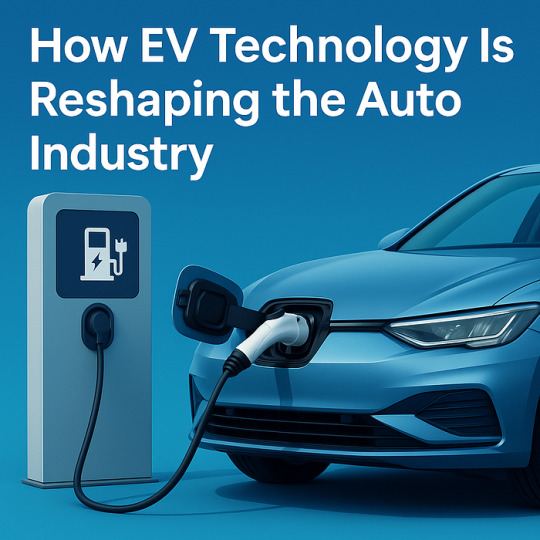
The Big Picture: More Than Just Batteries
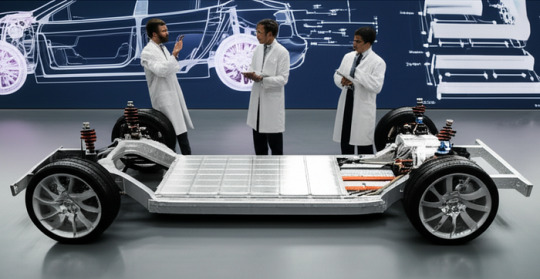
When people think EVs, they often zero in on the batteries, and sure, the lithium-ion packs under the floor are a big part of the story. But the real transformation is much broader. EV technology is pushing automakers to rethink the entire car, from chassis engineering to user experience. Traditional combustion engines shaped cars for over a century. Now, freed from those constraints, designers are experimenting with flat floors, roomier cabins, and even yoke-style steering wheels.
Think about it: no bulky engine up front, no transmission tunnel running down the middle. That’s why EVs like the Hyundai Ioniq 5 or the Tesla Model Y feel so spacious inside, even though they don’t look massive from the outside. It’s design freedom we’ve never had before. (Source)
Software Is the New Horsepower

If you haven’t noticed, cars are becoming more like smartphones on wheels — and that’s not necessarily a bad thing. Over-the-air (OTA) updates mean your car can now evolve over time. Features like adaptive cruise control, lane-keeping assist, or even better battery performance can be downloaded overnight.
This shift toward software-defined vehicles changes everything. Automakers no longer stop innovating once the car leaves the lot. It’s like buying a car that keeps getting smarter, month after month. Tesla pioneered it, sure — but now Ford, BMW, and even Kia are catching up.
It also means the real competition isn’t just about torque or range anymore. It’s about UX design, interface responsiveness, app integration, and cloud connectivity. Suddenly, your next car-buying decision might hinge on how intuitive the touchscreen is or whether your Spotify playlists sync seamlessly.
Sustainability Is Driving Demand (and Innovation)
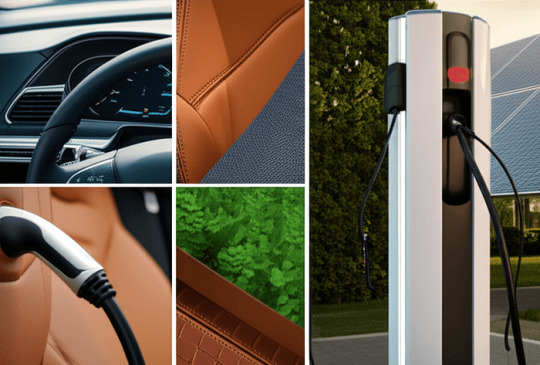
We can’t talk about EVs reshaping the industry without touching on climate. Environmental regulations are tighter than ever, and cities across the globe are planning bans on internal combustion engine vehicles. Automakers don’t have a choice — they either adapt or get left behind.
But the cool thing is, this pressure has bred innovation. Solid-state batteries, regenerative braking that adds real mileage, materials made from recycled plastics, vegan leather — it’s all part of a growing trend that merges sustainability with style and performance.
And let’s not forget the growing EV infrastructure. Charging networks are expanding fast, especially in North America, Europe, and parts of Asia. What used to be “range anxiety” is quickly becoming “where should I stop for a coffee while my car tops up?”
What This Means for You and Me
For car lovers like us, this era is wild. I used to scoff at the idea of electric cars — no engine roar, no manual gearbox, where’s the fun in that? But now? I’m having more fun than ever. Instant torque, lower running costs, and the quiet satisfaction of gliding past a fuel station? That’s a win in my book.
Sure, the industry’s not perfect. EVs are still pricey, and there’s a long way to go in terms of battery recycling and raw material sourcing. But even with all that, the momentum is undeniable.
EV technology isn’t just tweaking the edges — it’s redefining the game. Whether you’re a diehard petrolhead or just want something efficient for the daily grind, this shift is something you can’t ignore. And honestly? I’m here for it.
#EVTechnology#ElectricVehicles#AutoIndustry#FutureOfDriving#SustainableMobility#CarDesign#SoftwareDefinedVehicles#OverTheAirUpdates#EVInnovation
0 notes
Text
Connected Autonomous Vehicles (CAVs)
Introduction

Connected Autonomous Vehicles (CAVs) are at the cutting edge of a revolution in transportation that is changing at a rate that was previously thought to be impossible. Often called self-driving cars or autonomous automobiles, CAVs combine two innovative technological fields: connectivity and autonomy. In addition to being able to operate autonomously with little to no assistance from humans, these cars are also built to communicate with networks, infrastructure, and other cars in real time.
A radically different driving experience — one that is safer, more effective, and more accessible — is made possible by CAVs’ dual capacity. Even though they are currently in different phases of creation and execution, these cars mark a paradigm shift that will have a big impact on personal mobility, city planning, transportation networks, and environmental objectives.
Connected Autonomous Vehicles : What Are They?
CAVs have a variety of technology installed, such as:
Sensors (radar, lidar, ultrasonic, etc.)
GPS systems and cameras
Machine learning algorithms and artificial intelligence (AI)
Vehicle-to-Everything (V2X) platforms for communication
Together, these parts give the car complete situational awareness, which allows it to evaluate road conditions, identify obstacles make decisions while driving, and interact with other systems. According to SAE International standards, CAVs range in degree of autonomy from Level 1 (driver assistance) to Level 5 (completely autonomous).
Connectivity, the second crucial component, allows cars to share real-time data with:
Additional automobiles (V2V)
Roadside facilities (V2I)
Devices for walking (V2P)
Networks based on the cloud (V2N)
Predictive route planning, proactive safety measures, and coordinated traffic flow are made possible by this strong network.
Connected Autonomous Vehicles’ Advantages
With several social, economic, and environmental advantages, CAVs hold great promise.
1. Increased Security
Over 90% of traffic accidents worldwide are the result of human error. By using sensors and algorithms instead of human judgment, CAVs can remove many these errors. These cars’ advanced driver-assistance systems (ADAS) allow them to:
Increased accuracy in identifying dangers
Respond more quickly to shifting road conditions
Keep safe distances and ideal speeds.
Additionally, real-time knowledge of traffic signals, road dangers, and other cars’ positions is made possible by V2V and V2I communication, which greatly lowers the chance of crashes.
2. Less Traffic Jams
Poor Lane discipline, abrupt braking, and erratic driving styles are frequently the causes of traffic inefficiency. CAVs can get rid of these problems by:
Making the most of lane usage
Keeping constant speeds
coordinating with traffic systems and other automobiles

3. Increased Availability
The new degree of mobility independence that CAVs provide is among their most revolutionary benefits:
Senior citizens
Individuals with disabilities
People who can’t get a driver’s license
As a result, these individuals can carry out everyday tasks — such as going to appointments, shopping, or commuting — with the assistance of autonomous cars, thereby eliminating the need for caregivers or reliance on public transportation.
4. Sustainability of the Environment
In addition to enhancing mobility, CAVs support environmental objectives in a number of ways, such as reducing emissions, optimizing traffic flow, and promoting energy-efficient driving behaviours.
decreased fuel usage as a result of improved driving techniques
Reduce emissions by cutting down on idle time.
Combining electric vehicle (EV) technology to further cut down on carbon emissions
Since many Connected Autonomous Vehicles prototypes are electric, they provide two sustainability benefits: reduced energy consumption and improved route efficiency.
5. Effective Parking and Land Use

Given that self-driving cars can park and drop off passengers in less crowded or isolated locations:
Parking lots could be converted by cities into green areas or residential buildings.
It would be possible to reduce traffic around parking lots.
Urban areas could see improvements in both real estate value and quality of life.
6. Job Creation and Economic Development
Although job displacement is a worry, CAVs will also generate employment opportunities in:
Development of software
Cybersecurity
Telecommunications infrastructure
Self-sufficient system upkeep and diagnosis
The ability of “passenger-drivers” to work or unwind during journeys may also boost productivity, which might boost the economy even more.
7. A Higher Standard of Living
As a result, CAVs relieve the strain of driving, thereby enabling passengers to focus on other activities such as working, relaxing, or engaging with entertainment systems during their journey.
Work while on the go
Take pleasure in entertainment
Take a nap and unwind.
The change may alter the purpose of travel time and enhance mental health.
Connected Autonomous Vehicles Difficulties and Drawbacks
Despite their potential, a number of issues need to be resolved before CAVs are widely used.
1. Risks to Cybersecurity
Due to their heavy reliance on data transfer, CAVs are susceptible to:
Cyberattacks
Tampering with the system
Unauthorized access to data
Consequently, data integrity and passenger safety depend on this ecosystem being properly secured. To address these concerns, some of the key solutions include:
Encryption from beginning to conclusion
Over-the-air, secure updates
Control systems that are redundant
2. Exorbitant expenses for development and deployment
Autonomous navigation requires costly technology, such as AI computers, high-resolution sensors, and lidar. This results in:
Early iterations of CAVs were too expensive for typical consumers. Implementing a fleet is costly for transportation firms. It is challenging to deploy on a large scale without public-private collaborations.
3. Improvements to the Infrastructure
The current infrastructure must be updated with the following to optimize CAV benefits:
Intelligent traffic signals
CAV-only lanes
5G networks with high speeds
Particularly in emerging countries, this calls for a large investment and careful urban planning.
4. Privacy Issues with Data

In practice, Connected Autonomous Vehicles generate and examine vast amounts of data regarding various aspects of their environment, such as traffic conditions, road infrastructure, and surrounding vehicles
User behaviour
Patterns of travel
Personal identifiers and biometrics
In the absence of strict regulatory control, this can result in:
Misuse of data
Unauthorized monitoring
Erosion of the right to privacy
5. Work Moving
There may be job losses in sectors including delivery, taxi, and trucking that depend on professional drivers. It is essential that governments take the initiative to establish:
Retraining initiatives
Tech and AI education
Social safety nets for the transition’s assistance
6. Ambiguity in Law and Regulation
The laws in place are not prepared to deal with:
Liability in incidents involving autonomous vehicles
Sharing data across borders
Testing and deployment standards
Therefore, to ensure sustainable progress in mobility, regulatory agencies must establish comprehensive structures that not only promote innovation but also effectively balance accountability and creativity.
7. An excessive reliance on technology
However, an excessive dependence on self-governing systems could potentially result in unintended consequences, such as reduced human oversight, increased vulnerability to system failures, or ethical dilemmas in decision-making.
Users’ complacency
Declining driving skills when driving by hand
Vulnerability of society to natural disasters or system failures
It is necessary to maintain human override capability and backup systems.
The Road Ahead: Opportunities for Collaboration
Cooperation amongst multiple parties is crucial to achieving CAVs’ full potential:
Legislation, safety regulations, and adoption incentives must be established by governments.
Private businesses must innovate sensibly, making sure their goods adhere to security and moral guidelines.
To facilitate this shift, academia must offer talent pipelines, teaching, and research.
In order to guarantee that CAVs live up to society expectations for safety, privacy, and equity, public participation is also essential.
Dorleco: Innovative Autonomous Mobility in the Future
Dorleco is at the forefront of advancing automotive technology. To support the developing ecosystem of connected autonomous vehicles, we have developed a suite of clever hardware and software solutions. Among our products are:
Vehicle Control Units (VCUs): The brains behind autonomous and electric cars, allowing for effective motion and engine control.
To enhance intelligent communication within vehicles, CAN keypads and displays provide strong and user-friendly human-machine interfaces, thereby improving driver interaction and overall system efficiency.
At the core of modern electric vehicles, EV software solutions offer modular and scalable platforms. In particular, these platforms are essential for efficiently managing connectivity and electrification systems. As a result, they enable seamless integration and significantly enhance overall vehicle performance.
In the long run, our goal is to bridge the gap between practical applications and contemporary vehicular intelligence. As Connected and Autonomous Vehicles (CAVs) continue to revolutionize transportation, Dorleco, therefore, remains your trusted partner in delivering safety, effectiveness, and innovation.
Conclusion
Future mobility is about to be redefined by connected autonomous vehicles . They have unparalleled potential to enhance transportation’s environmental sustainability, safety, and inclusion. However, cautious planning, strong legislative frameworks, and robust technological infrastructure are necessary to realize this promise.
By proactively addressing today’s transportation challenges and fostering collaborative innovation, we can build a transportation ecosystem that benefits everyone — from individual commuters to entire communities. Moreover, with the right leadership and vision, the dream of autonomous, connected, and intelligent mobility can truly become a reality
Dorleco is honoured to support this ambition, giving our clients and partners the tools they need to take the lead in this fascinating new era. Come help us create tomorrow’s smart roads.
Dorleco is at the forefront of automotive innovation, offering cutting-edge products and services such as Vehicle Control Units (VCUs), CAN Displays, CAN Keypads, and EV software solutions. Our expertise in automotive technology helps drive the future of connected autonomous vehicles, ensuring efficiency, safety, and seamless integration. Partner with us to shape the future of mobility!
#Dorleco#CAVs#SmartMobility#AutonomousVehicles#EVtechnology#VCU#CANDisplay#FutureOfMobility#AutomotiveInnovation#SmartTransportation#ConnectedCars
0 notes
Text
Fast Rectifiers Market Future Trends Shaping Efficiency, Miniaturization, and Power Management Worldwide
The fast rectifiers market is undergoing a significant transformation, driven by a combination of technological innovation, increasing demand from high-speed electronics, and the growing need for efficient power management solutions. Fast rectifiers, known for their ability to switch on and off quickly with minimal reverse recovery time, are vital components in many modern applications, including consumer electronics, automotive systems, industrial machinery, and renewable energy systems. As industries aim for higher performance with lower energy losses, the future trends in this market reflect the intersection of speed, reliability, and sustainability.

Rise in Demand for High-Frequency Applications
One of the major future trends in the fast rectifiers market is the increasing integration of these components in high-frequency circuits. Power supplies, RF systems, and modern digital devices rely on fast rectifiers for smooth performance and noise reduction. As digital infrastructure expands and the Internet of Things (IoT) grows, the need for components that can handle higher switching frequencies efficiently is becoming more prominent. Fast rectifiers are well-suited for this, making them essential for next-gen devices, particularly where compactness and heat reduction are key.
Surge in Electric Vehicles (EVs) and Charging Infrastructure
The global shift towards electric vehicles is significantly influencing the fast rectifiers market. These components are used in onboard chargers, inverters, and other power conversion systems within EVs. As countries increase their EV adoption rates and invest in widespread charging infrastructure, the demand for efficient rectification processes will continue to rise. Fast rectifiers ensure lower heat dissipation and faster power conversion, which are critical for enhancing vehicle performance and charging efficiency.
Moreover, EV manufacturers are now looking to implement silicon carbide (SiC) and gallium nitride (GaN)-based fast rectifiers to achieve higher voltage endurance and better thermal management. This shift towards wide bandgap semiconductors is expected to be a defining trend in the coming years.
Miniaturization and Integration into Compact Devices
With the ongoing miniaturization of electronic devices, there is a growing need for smaller, yet more powerful, components. Fast rectifiers that offer low forward voltage drop and minimal reverse recovery time are increasingly integrated into microcontrollers, power supplies, and wearable technologies. The demand for compact and portable devices such as smartphones, laptops, and smartwatches continues to rise, thereby fueling innovation in fast rectifier designs to support slim profiles without compromising performance.
In this context, the development of surface-mount devices (SMDs) and chip-scale packaging (CSP) has become a key focus area for manufacturers. These packaging technologies allow better thermal efficiency and high-density integration, opening new avenues for fast rectifiers in both consumer and industrial applications.
Integration with Renewable Energy Systems
Fast rectifiers are gaining momentum in renewable energy systems such as solar inverters and wind turbines. These applications require reliable and efficient rectification to convert variable AC input into stable DC output. As the world intensifies its focus on clean energy, the deployment of fast rectifiers in solar power inverters and battery storage systems will grow. They enable high-speed switching and reduce power losses, which is crucial for maximizing energy output in renewable setups.
The trend toward decentralized energy systems, such as rooftop solar and microgrids, also underscores the need for advanced rectification technologies. Fast rectifiers contribute to the reliability and efficiency of these localized energy solutions.
Adoption of Wide Bandgap Semiconductor Materials
Another crucial trend shaping the future of the fast rectifiers market is the adoption of wide bandgap semiconductor materials like SiC and GaN. These materials offer better efficiency, higher thermal conductivity, and faster switching capabilities than traditional silicon. Fast rectifiers using these advanced materials can operate at higher voltages, temperatures, and frequencies—making them ideal for demanding applications like data centers, 5G infrastructure, and aerospace electronics.
While these materials currently come at a higher cost, ongoing research and manufacturing advancements are expected to lower production costs, paving the way for broader adoption across different sectors.
Regional Expansion and Emerging Markets
The fast rectifiers market is witnessing rapid growth not only in developed markets like North America and Europe but also in emerging economies across Asia-Pacific and Latin America. Countries like China, India, and Brazil are investing heavily in infrastructure development, consumer electronics, and renewable energy, which are key application areas for fast rectifiers.
As these regions expand their industrial and electronic manufacturing bases, the demand for reliable and efficient rectification technology will grow, offering new opportunities for global and local manufacturers alike.
Conclusion
Future trends in the fast rectifiers market highlight a promising outlook driven by electric vehicles, renewable energy integration, miniaturization of electronics, and advancements in semiconductor materials. The convergence of speed, efficiency, and compact design continues to shape the evolution of fast rectifiers, making them indispensable in modern power electronics. As industries push towards smarter and greener solutions, fast rectifiers are poised to play a critical role in powering innovation across the globe.
0 notes
Text
Power Pulse Poll: EVs vs Hybrid Cars
Tech & Innovation
Which ride drives your future?
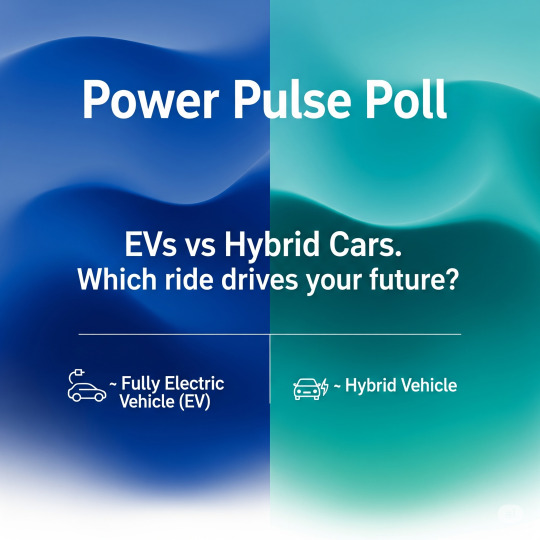
As clean energy takes the wheel, we want to hear from YOU:
🔋 Fully Electric Vehicle (EV)
⛽🔋 Hybrid Vehicle
Electric Vehicles (EVs) are powered entirely by electricity stored in batteries. They produce zero tailpipe emissions, offer lower running costs, and are often quieter and smoother to drive. However, they rely on charging infrastructure, can have limited range, and charging can take longer than refueling.
Hybrid Vehicles combine a gasoline engine with an electric motor. They don't need to be plugged in and offer better fuel efficiency than traditional cars. They’re ideal for those not ready to go fully electric. On the downside, hybrids still produce emissions and have more complex maintenance due to dual systems.
Both options represent a step toward cleaner mobility—EVs are the future, while hybrids are a flexible bridge to get there.
Cast your vote now and tell us why in the comments below!
Are you all in on electric, or do you think hybrids are the smarter transition?
🗳️ Vote now | Your opinion powers the pulse.
#powerpulsemagizine#EVvsHybrid#sustainable driving#drive the future#electricvshybrid#smartcartech#evtechtrends#automotiveinnovation#evtechnology
0 notes
Text

🚀 Ready to Power Your Future? Admissions are NOW OPEN for B.Tech in Electrical Engineering at ITM University for the 2025–26 academic year!
💡 Choose a career that’s shaping the world: 🔋 Electric Vehicle Technology ☀️ Solar Alternative Energy
🎓 Why ITM University? ✨ Hands-on labs ✨ Future-ready curriculum ✨ Top recruiters & real industry exposure ✨ Powered by Smart Choice Educational Services
🔗 Apply now: www.seseducation.com 📞 DM us or get in touch to speak with a counselor!
#BTech#ElectricalEngineering#ITMUniversity#EVTechnology#SolarEnergy#EngineeringCollege#AdmissionsOpen#FutureEngineer#STEMEducation#CollegeLife#SmartChoiceEducation#TechCareers
0 notes
Text
#automotivechipmarket#electricvehicles#autonomousdriving#connectedcar#smartmobility.#TechInnovation#AutomotiveIndustry#MobilitySolutions#EVTechnology#powerelectronics#powermanagement#powersemiconductor
0 notes
Text
#Hyundai#BostonDynamics#Robotics#AI#Automation#Manufacturing#HumanoidRobots#SpotRobot#AtlasRobot#TechInnovation#FutureOfWork#RoboticsEcosystem#AIInManufacturing#IndustrialRobots#TechnologyPartnership#SmartManufacturing#RoboticSolutions#EVTechnology#DigitalTransformation
0 notes
Text
How Industry 4.0 is Transforming Engineering Careers!
The world of engineering is changing FAST, thanks to Industry 4.0! 🌍💡 From IoT and AI to Data Analytics and Electric Vehicles (EV), cutting-edge technologies are reshaping the future of work. Are you ready to keep up?
💼 Top In-Demand Skills for Engineers: ✅ IoT (Internet of Things) – Smart machines, smart careers! ✅ Artificial Intelligence & Machine Learning – The future of automation. ✅ Data Analytics – Powering decision-making in industries. ✅ Electric Vehicle (EV) Technology – Drive the revolution in mobility! ✅ Smart Manufacturing & Automation – The factories of the future.
📢 Why Industry 4.0 Matters for You 🎯 Higher salary potential 💰 🎯 Global job opportunities 🌍 🎯 Future-proof career skills 🚀 🎯 Hands-on training & placement support
🔧 Get Trained, Get Hired! At TVS Training & Services Ltd., we offer specialized Industry 4.0 training programs designed to help engineering graduates gain real-world skills and 100% placement support.
📩 DM us to know more or visit our website! Your future in Industry 4.0 starts NOW! 💡🔥
#Industry4.0 #c #IoTTraining #EVTechnology #MachineLearning #DataAnalytics #SmartManufacturing #EngineeringPlacement #FutureOfWork

#FutureOfWork#Industry4.0#c#IoTTraining#EVTechnology#MachineLearning#DataAnalytics#SmartManufacturing#EngineeringPlacement
1 note
·
View note
Text
Electric Vehicle Motor Market Growth and Sights Market Research Study Forecasting Industry 27% CAGR
0 notes
Text
Xpeng Inc. (NYSE:XPEV) and Its Role in the Electric Vehicle Industry
Highlights
Xpeng Inc. is a leading electric vehicle manufacturer, focusing on smart mobility solutions.
The company integrates advanced autonomous driving technology and AI-powered features into its vehicles.
With a strong presence in the EV sector, continues to expand its market reach and innovation in sustainable transportation.
Smart Electric Vehicles and Innovation
Xpeng Inc. (NYSE:XPEV) specializes in the development and production of intelligent electric vehicles, combining cutting-edge technology with sustainable mobility solutions. The company’s lineup includes high-performance EVs equipped with autonomous driving capabilities and smart connectivity features. By incorporating AI-driven technology, (NYSE:XPEV) enhances driver assistance systems, improving safety and convenience.
Technological Advancements and Autonomous Driving
The company continues to refine its autonomous driving system, integrating advanced sensors and machine learning algorithms to enhance real-time decision-making on the road. With continuous updates and enhancements, (NYSE:XPEV) aims to develop a seamless driving experience that aligns with the evolving demands of the smart mobility sector.
Market Expansion and Global Reach
Beyond its domestic market, (NYSE:XPEV) is actively expanding into international regions, strengthening its presence in the global EV sector. Strategic partnerships and innovative product offerings contribute to the company’s efforts in establishing itself as a significant entity in the industry.
Commitment to Sustainability and Smart Mobility
Sustainability remains a core focus for (NYSE:XPEV), with ongoing research and development aimed at enhancing battery efficiency, reducing carbon emissions, and improving overall vehicle performance. Through its commitment to innovation, the company supports the shift towards eco-friendly transportation solutions.
Xpeng Inc. (NYSE:XPEV) continues to drive advancements in the electric vehicle sector by integrating smart technologies and expanding its global footprint. As the industry evolves, the company remains dedicated to shaping the mobility landscape with intelligent, efficient, and sustainable solutions.
#ElectricVehicles#NYSE#Xpeng#SmartMobility#AutonomousDriving#EVTechnology#Sustainability#AI#CleanEnergy#FutureOfTransport
0 notes
Text
#EVTechnology#BatteryThermalManagement#ElectricVehicles#SustainableMobility#Innovation#EVPerformance#ThermalManagement#AutoEVTimes#electricvehiclesnews#evtimes#evbusines
0 notes
Text
Tune in to learn about the Semco SI-I PBCDSE 3kW 36S, an advanced all-in-one device for lithium battery charging, discharging, and balancing. With a wide voltage range of 14V-215V, 48-channel equalization, and smart data storage, it ensures maximum battery performance for EVs, energy storage systems, and industrial applications.
For inquiries, contact us at: 📧 [email protected] | ☎️ +91-8920681227 | 🌐 www.semcoinfratech.com
#LithiumBatteryCharger#BatteryBalancing#EVBatteryTesting#SemcoInfratech#EnergyStorageSolutions#BatteryMaintenance#BatteryTestingEquipment#EVTechnology
0 notes
Text
Autonomous Vehicle Regulations
Introduction

Autonomous vehicles (AVs), sometimes known as driverless or self-driving automobiles, are a revolutionary development in transportation technology. They have the potential to improve mobility for the elderly and disabled, lessen traffic, and increase road safety. However, in order to fully reap these advantages, strong regulatory frameworks that oversee the safe development, testing, and deployment of Autonomous Vehicle Regulations must be established in addition to technological improvements.
Autonomous Vehicle Regulations are developing legal frameworks designed to handle the many issues raised by this game-changing technology. These include worries about infrastructure preparedness, public trust, safety, liability, and data privacy. Governments everywhere are taking proactive steps to create laws that guarantee AVs are incorporated into society in a way that is inclusive, moral, and safe.
Important Features of Laws Governing Autonomous Vehicle Regulations

1. Safety Rules
Safety is the cornerstone of rules governing autonomous cars. Ensuring that autonomous vehicles operate as safely as human drivers, if not safer, is the main goal of any legislation. To achieve this, governments and regulatory agencies have set strict safety guidelines that include:
2. Sensor and perception systems:
Autonomous Vehicle Regulations evaluate AVs’ precision in detecting and interpreting pedestrians, other vehicles, and road conditions.
3. Algorithms for making decisions:
Legal frameworks require that AI-driven systems be validated to make sure they can manage intricate driving situations and edge circumstances.
4. Fail-safe mechanisms:
To prevent accidents in the event of a system failure, requirements for emergency controls and redundant systems are frequently imposed.
Regulators hope to reduce the hazards associated with hardware failures, software bugs, and erratic road conditions by implementing such standards. The focus on safety also increases public trust, which is essential for AV technology to be widely adopted.
5. Protocols for Testing and Deployment
There are strict Autonomous Vehicle Regulations governing the process from prototype to public deployment. Before testing AVs on public roadways, developers must secure specific licenses or permits. Usually, these permits include:
1. Limited testing areas: Early tests are frequently limited to designated routes or geofenced locations.
2. Remote control and monitoring: Even during autonomous testing, several jurisdictions demand human supervision.
3. Data submission: Testers are required to provide frequent reports on occurrences, technical problems, and vehicle performance.
Deployment regulations raise these requirements, which call for thorough safety evaluations and practical validation. By ensuring that AVs are progressively exposed to intricate driving situations, this tiered approach enables regulators to methodically detect and reduce dangers.
6. Information Gathering and Reporting
Large amounts of operational data, such as event logs, route history, and sensory input, are produced by autonomous cars. Regulatory structures frequently require:
1. Constant data logging: AVs need to document system actions, choices, and interactions with the surroundings.
2. Reporting incidents: Any mishap or irregularity needs to be noted and reported to the appropriate authorities.
3. Transparency protocols: Regulators must have access to some data so they can independently review it.
Performance monitoring, forensic analysis in the event of an accident, and future policy improvements are all made possible by this data. Public monitoring and accountability are also strengthened by regulations that place a strong emphasis on data disclosure.
7. Frameworks for Liability and Insurance
One of the most difficult regulatory problems in AV deployment is figuring out who is to blame for an accident. Driver-responsibility-based traditional paradigms are no longer adequate. Regulations currently aim to:
1. Assign blame: The manufacturer of the vehicle, the software developer, or even the operator of the infrastructure may be held liable, depending on the circumstances.
2. Encourage new insurance models: Laws are being revised to take into account no-fault insurance models and product liability frameworks.
3. Process claims more easily: Having clear policies helps victims get paid quickly and deters lawsuits.
The goal of these frameworks is to provide an open legal system in which each party is aware of their rights and responsibilities.
8. Cybersecurity and Privacy
Privacy becomes a crucial regulatory concern as AVs gather vast amounts of data, such as location history, biometric information, and real-time surroundings. Important prerequisites consist of:
Data minimization: We should gather only information that is absolutely necessary.
Safe storage: Encrypted data must be kept in a secure location.
Controlled access: Only authorized individuals or organizations should have access to sensitive data.
Approval from users: Data practices must inform owners and passengers, who must give their approval.
To prevent threats from compromising AVs and to guarantee the integrity of vehicle operations, we also need strong cybersecurity standards. By prioritizing privacy, we align AV development with more general digital rights standards and increase consumer trust.
9. Inclusivity and Accessibility
For marginalized populations, especially those with disabilities or restricted access to transportation, autonomous cars have the potential to completely transform mobility. The demands of regulations are increasing:
Features that comply with the Americans with Disabilities Act (ADA) in the United States are one example of compliance with accessibility standards.
Voice control, tactile feedback, and visual help for people with disabilities are examples of user interface adjustments.
Universal design principles: From the beginning, vehicles should be useful by a wide variety of users.
Regulations that require inclusion make sure that AV technology benefits all facets of society equally.
10. Infrastructure Readiness
Supportive infrastructure plays a major role in AV implementation. Frameworks for regulations may include:
High-definition mapping: They standardize and update AV navigation maps often.
Roadway sensors and communication: Real-time data sharing via vehicle-to-infrastructure (V2I) systems.
Upgrades to traffic and signs include AV-compatible signage and smart signals.
In order to modify public areas for AV integration, cooperation between urban planners and transportation authorities is essential.
Benefits of Autonomous Vehicle Regulations

The following are some advantages of Autonomous Vehicle Regulations that encourage responsible innovation and implementation:
1. Increased Security
Regulations assist avoid accidents and lower the number of fatalities by requiring strict testing and safety procedures. They lessen dependency on unproven systems and establish a benchmark for acceptable AV performance.
2. Consistency and Standardization
Developers and manufacturers have an even playing field because to uniform laws. Global standardization can simplify compliance and hasten the deployment of cross-border antivirus software.
3. Legal Clarity and Accountability
In the event of an accident, clear liability regulations eliminate doubt and guarantee that those at fault are held accountable. Consequently, this clarity supports fair insurance practices and legal adjudication.
4. Improvements Driven by Data
Moreover, mandatory data collecting enables continuous learning and improvement. As a result, engineers and policymakers are able to pinpoint persistent problems, create fixes, and modify safety regulations over time.
5. Acceptance and Trust by the Public
When people believe that someone is closely watching AVs, they are more likely to embrace and use them. Transparency in regulations calms the public and allays concerns about job displacement or safety.
6. Assurance of Privacy and Cybersecurity
Laws that protect user data and stop cyberattacks enhance trust and sustained user involvement. They also stop the misuse of private information.
7. Innovation in Balance
Clear bounds provided by regulations safeguard the public interest while permitting technical innovation. This balance encourages moral and environmentally friendly innovation.
8. Inclusion and Social Equity
Additionally, regulations guarantee that AVs serve everyone, not just a chosen few, by mandating accessibility features. Consequently, this all-inclusive strategy lessens mobility inequalities in society.
The difficulties and disadvantages of AV regulations

Notwithstanding the advantages, there are significant regulatory obstacles:
1. Excessive regulation
However, regulations that are too onerous may discourage new ventures or hinder innovation. Indeed, a thin line separates bureaucratic burden from safety assurance.
2. Expensive Compliance
In addition, the financial and technological challenges of complying with regulations may be too much for small enterprises to handle. As a consequence, these expenses may also lead to higher consumer pricing.
3. Insufficient Worldwide Uniformity
Furthermore, disparate national standards make international deployment more difficult. Consequently, manufacturers must modify vehicles for every jurisdiction, which raises both the cost and complexity.
4. Lag in Regulation
Moreover, legislation frequently lags behind technological advancements. As a result, older legislation may not adequately address emerging hazards or may even impede the implementation of innovative features.
5. Slow Deployment and Testing
However, intricate permit procedures and reporting requirements may delay testing schedules. Therefore, for timely innovation, we must streamline regulatory processes.
6. Problems with Interoperability
AVs created in accordance with one set of rules might not work properly in another, which could provide inconsistent user experiences or safety issues.
7. Overhead in Administration
Administrative difficulties arise from stringent reporting and paperwork requirements, particularly for regulators and companies with little funding.
8. Insufficient Liability Coverage
The current legal frameworks may not provide sufficient coverage for complex scenarios such as mixed-fault collisions involving both human and autonomous drivers. Liability models require more specificity.
Conclusion
Autonomous Vehicle Regulations will have a major role in determining how people move in the future. Regulations offer the framework for the development of safe, inclusive, and effective transportation systems as AV technology advances. The proper legal frameworks can unleash the full potential of AVs, from improving road safety and protecting data privacy to encouraging innovation and advancing accessibility.
Governments, IT companies, civil society, and the general public must, however, continue to communicate and work together on this project. Regulations need to be flexible, progressive, and grounded in practical knowledge. We can only create a transportation system that genuinely meets the requirements of everyone — safely, morally, and sustainably — by taking such a cooperative and adaptable approach.
As we approach a new era in mobility, careful and proactive regulation will be essential to advancing the field while preserving the interests of the public. The development of autonomous vehicles is about building a better, more connected world, not just about advancing technology.
#AutonomousVehicles#AVRegulations#SmartMobility#FutureOfTransport#Dorleco#SelfDrivingCars#RoadSafety#InnovationInMotion#VCU#CANDIsplays#EVTechnology#MobilityForAll#TechForGood#ConnectedCars
0 notes
Text
Battery Management System Market Future Trends Driving Innovations Across Electric Vehicles and Energy Storage
The battery management system market is experiencing transformative changes, shaped by technological advancements and a global shift toward electrification and sustainability. As the need for high-performance batteries expands across electric vehicles (EVs), renewable energy systems, and industrial applications, the future trends in this market point to robust growth and innovation. This article explores the major trends expected to shape the future of the BMS market and how businesses and technology developers are preparing for the next phase of evolution.
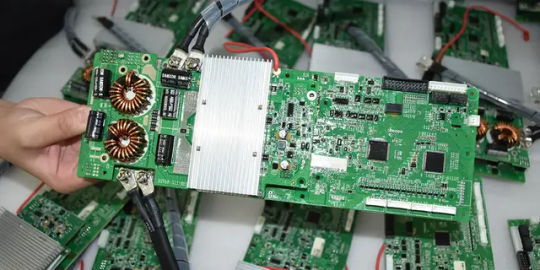
Rising Demand from Electric Vehicle Sector
One of the most significant drivers influencing future trends in the battery management system market is the continued growth of the electric vehicle industry. Governments across the globe are setting ambitious targets to phase out fossil fuel-powered cars in favor of electric mobility. With this shift, the need for efficient, reliable, and safe BMS solutions becomes more pressing.
Battery systems in EVs must be monitored and managed carefully to optimize performance, enhance safety, and extend battery life. Future BMS technologies are expected to focus more on real-time data monitoring, predictive maintenance, and AI-based battery behavior analysis. Integration with connected vehicle platforms and smart charging infrastructures will also become more common.
Integration of AI and Machine Learning
Artificial intelligence and machine learning are set to revolutionize the BMS landscape. These technologies enable advanced algorithms to predict battery health, optimize charging cycles, and reduce energy loss. Instead of relying solely on fixed rules, AI-based BMS systems can learn from usage patterns and environmental conditions to make smarter decisions.
This trend will lead to more adaptive and intelligent battery systems, reducing the risk of overheating, overcharging, or rapid degradation. With predictive analytics, manufacturers and users can anticipate issues before they occur, minimizing downtime and enhancing the overall lifespan of battery systems.
Increasing Adoption in Renewable Energy Storage Systems
The integration of renewable energy sources like solar and wind into power grids is increasing the need for large-scale energy storage solutions. BMS systems are critical in these setups to manage energy flow, ensure safety, and maintain battery efficiency under fluctuating load conditions.
Future BMS trends will focus on scalability, remote monitoring, and grid integration to accommodate expanding renewable energy networks. The development of more robust and modular BMS solutions will allow utilities and industrial users to build flexible, scalable storage systems capable of handling varying demand levels.
Shift Toward Wireless BMS Architecture
Another emerging trend is the shift from traditional wired BMS systems to wireless alternatives. Wireless battery management systems offer several advantages, including reduced system complexity, lower weight (especially critical in EVs and aerospace applications), and improved installation flexibility.
Wireless BMS also enables more effective integration with cloud platforms, enabling real-time data transmission and easier software updates. As cybersecurity technologies improve, concerns about data safety in wireless systems are expected to diminish, encouraging broader adoption in automotive, grid, and consumer electronics applications.
Focus on Safety and Regulatory Compliance
With the expansion of battery-powered applications, safety has become a central concern. Faulty batteries can lead to overheating, fires, or explosions, especially in high-capacity systems like EVs or grid storage units. Therefore, future BMS trends include a growing emphasis on advanced safety features.
These may include real-time thermal monitoring, short-circuit protection, cell balancing technologies, and compliance with evolving global safety standards. Governments and industry bodies are also introducing stricter regulations, prompting manufacturers to upgrade BMS technologies to meet these requirements and ensure user safety.
Expansion of Solid-State and Lithium-Ion Alternatives
Solid-state batteries are gaining attention as the next big leap in battery technology. They offer higher energy density, faster charging times, and better safety than conventional lithium-ion batteries. However, these new chemistries come with different management requirements.
BMS solutions will need to adapt to manage solid-state batteries and other emerging chemistries like lithium-sulfur or sodium-ion. These systems require more precise monitoring and control, prompting a shift in BMS design to accommodate the unique properties of each battery type. This evolution presents a key opportunity for innovation in the market.
Data-Driven Insights and Cloud Connectivity
Data is becoming a key asset in the battery management system industry. Future BMS platforms are expected to integrate with cloud services to collect, store, and analyze vast volumes of performance data. This connectivity will enable real-time diagnostics, firmware updates, and fleet management in commercial applications.
For example, fleet operators using electric trucks or buses will benefit from centralized BMS data to monitor vehicle performance, schedule maintenance, and optimize routes. Cloud connectivity also allows for integration with broader energy management systems in homes, businesses, or utility grids.
Growing Applications in Consumer and Industrial Devices
While EVs and renewable energy dominate the BMS conversation, the market is also shifting toward broader applications. Consumer electronics, drones, power tools, and industrial equipment are all becoming more reliant on battery power.
As a result, manufacturers in these sectors are adopting compact, cost-effective BMS solutions to protect devices, extend battery life, and enhance performance. The future will see increasing BMS diversity, with specialized solutions tailored to the size, capacity, and use-case of each product category.
Conclusion
The future trends shaping the battery management system market reflect a dynamic and innovation-driven landscape. With electrification expanding across industries and consumers expecting longer-lasting, safer, and smarter battery systems, the role of BMS is becoming more vital than ever.
Key trends—including AI integration, wireless systems, safety enhancements, and expansion into renewable energy and emerging battery chemistries—will define the next generation of BMS technologies. Companies that stay ahead of these trends through continuous innovation and adaptation will play a central role in powering the future of clean energy and mobility.
0 notes